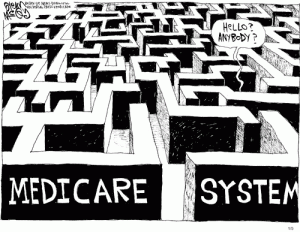Starting a senior housing enterprise or opening a new facility requires sizable investments in real estate, planning, building, and marketing.
By Jack Cumming
Starting a senior housing enterprise or opening a new facility requires sizable investments in real estate, planning, building, and marketing. It is capital intensive. It is also a trust business in which aging residents entrust their elder years to the care and oversight of others.
Trust Responsibility
Both the acceptance of advance payments for future services and the age-related dependence of the residents call for standards of capital adequacy. Adequate capitalization, over and above liabilities, can provide a cushion to assure the continuation of the enterprise and the fulfillment of its commitments.
Many thought leaders in the industry, both providers and residents, have long been concerned with financial soundness and stability. Many entrance fee senior housing enterprises, especially among the nonprofits, have GAAP liabilities exceeding assets, a troubling sign of weakness for any industry but particularly so for a trust-dependent industry.
The Micawber Principle
Attracting and satisfying consumers may be the primary justification for business, but profit is essential to its continuation. As Charles Dickens famously had Mr. Micawber declare to David Copperfield, expenditures exceeding income leads to misery. This is called the Micawber principle. There’s nothing wrong with profit; it is key to capital adequacy.
Studies of capital adequacy are a popular subject for mathematically inclined academics. More practical people can soon be lost in a world of advanced academic formulations. The basics, though, are not complex. Most of the academic and regulatory focus has been on banks, although the insurance industry has also given rise to an extensive, highly academic literature. In addition to banks and insurance companies, pension plans, and brokerage organizations are trust institutions subject to minimum capital requirements.
Entrance fee senior housing falls in the same category of trust businesses, which promise to steward people’s money for their later benefit. That calls for similar minimum capital adequacy requirements. In the absence of regulatory safeguards for residents, it would be wise for the industry to develop voluntary standards and to devise means for enterprises to meet them. That will not be easy.
The Goldilocks Principle
Given valid matching accounting measures for assets and liabilities, assets should exceed liabilities by a margin sufficient to absorb most economic and natural shocks. Too little capital leaves the enterprise, and the residents in its care, subject to financial failure. At the other extreme, excess capital is largely fallow, so increasing capital above what’s needed is counterproductive. Excess capital can also create a temptation for extravagance, relaxed diligence, or corporate adventures of speculation or overexpansion.
The exact margin needed is a matter of business judgment. This is called the Goldilocks principle. Leading a business toward prosperity, self-sufficiency, and continuity involves the exercise of sound business judgment. That involves mastery of the numbers, but that mastery has to be tempered with intuition and prudence. The responsible course is to find the golden sweet spot between the extremes.
A Precarious Practice
The nonprofit enterprises, which have become dependent on entrance fees, are particularly challenged because they lack equity capital beyond what donors may provide. Just as a down payment is needed to secure a mortgage for a home, enterprises need at-risk capital to secure their debt. Many nonprofits have rationalized diverting residents’ contractual fees from direct contract fulfillment to provide that at-risk capital. This practice is misleading.
If entrance fees are at-risk investments, as their use to secure debt suggests, they should be subject to securities laws. Deceptively, that questionable misuse of funds allows CCRCs to continue business as usual even while their liabilities exceed their assets. The balance sheet records enterprise solvency, i.e. the ability to meet its long-term financial obligations – a lifetime in the case of contract commitments to entrance fee residents. Liquidity is the ability to meet its short-term obligations. Using entrance fee cash for short-term purposes leaves the residents and the enterprise at long-term risk. It’s wrong to imagine perpetual operation as a pretext for undercapitalization. At best, such a perpetual pretext creates intergenerational inequities; at its worst, it ends badly when the presumed perpetuity ends.
If the industry is to meet capital adequacy standards, it’s likely to mean that many nonprofits may have to convert to for-profits, though they won’t have to abandon their values of service and commitment to mission. While that might result in short-term shrinkage of the industry, over time the reinvention of the continuum of care concept will result in sustainable, creative solutions to the challenges of aging.








